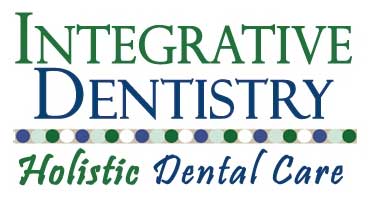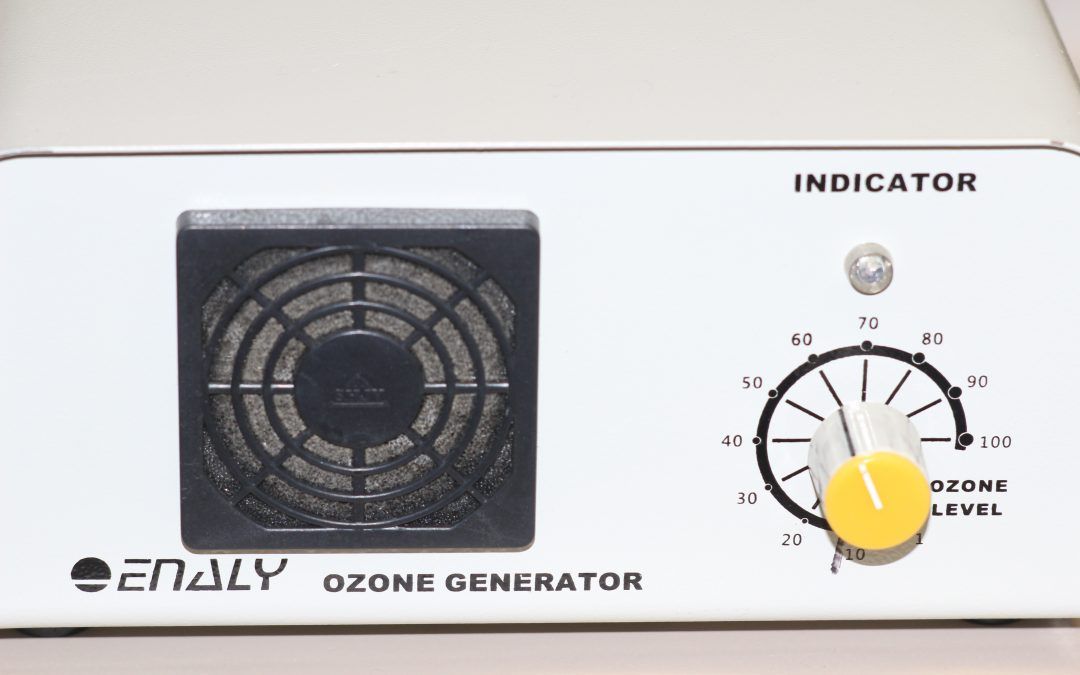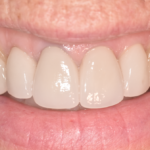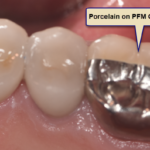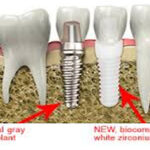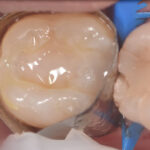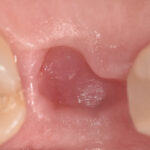I’m often asked how to avoid root canals while treating patients in my practice. No one wants a root canal in the first place. Besides hearing all the bad things from family and acquaintances, it’s simply not fun and often expensive! Besides this, the holistic crowd avoids root canals like the plague because they’ve heard that a bad or dead tooth can cause health problems down the road. So what is one to do? Avoid he root canal in the first place! The trick is how. That’s what the rest of this article is about.
The Biggest Causes of Root Canals
Deep decay or cavities are the most common way that root canals occur. This is because cavities contain bacteria and once this bacteria reaches the inside tissue of the tooth called the pulp, it causes an infection eventually killing the nerve and blood supply of the tooth. Usually, the infection inside the tooth builds up pressure and this causes pain or a ‘tooth ache’. After the nerve dies the pain can actually go away, for awhile. However, as the infection builds up further, it can start to leak into the bone around the tooth. This build up of infection continues until it is visible on an x-ray or causes swelling and pain once again. Then there is no question that the tooth needs to be treated to remove the infection with a root canal.
Some Simple Ways to Avoid Root Canals
In my practice, I often find that the answer to these questions is often yes. First, not all painful teeth need root canals. Other things that cause pain are cracks, decay, grinding your teeth, a high bite from recent dental work, dental work that is not properly sealed and trauma to your teeth. ‘That’s a lot of potential causes, doc.’ Yes it is. However, just because your teeth hurt or are sensitive doesn’t mean that your tooth automatically needs a root canal.
Think about it. The reason you can feel your tooth or have tooth pain is because your tooth is still alive. So pain does not automatically mean root canal. In fact if you remove the cause of the pain often the tooth makes a full recovery and does not need a root canal at all. Sometimes these things cause root canals, however many times the tooth can recover and heal short of a root canal just by addressing the cause.
As an example, before doing a root canal check and see if the bite is high and needs adjusting. This can be a simple way of avoiding root canals in some cases.
Fighting decay with ozone
This is how I prevent a root canal when there is deep decay or cavities in a tooth, and I regularly use it when working on teeth. Ozone is simply concentrated oxygen that kills harmful bacteria and supports healing, and when applied to a tooth it kills bacteria on the surface of the tooth and in cavities.
Sometimes when there is deep decay or cavity, dentists will recommend a root canal be done first even if there is no pain. Why is this? It’s because many times this deep decay will result in pain and infection later and the dentist is trying to avoid this bad outcome for you. It’s true that once a tooth gets infected due to deep decay it’s too late. But what can be done before the bacteria invades and kills the nerve of the tooth? In short the answer is ozone, which is O3 instead of O2. Once ozone hits your tooth it breaks down to simple oxygen. It’s as simple as that. There is nothing more familiar or healing to the body than oxygen. It’s the only way to kill the harmful bacteria without causing further trauma to the tooth and nerve and risking a root canal in the process.
So, how does ozone prevent root canals?
After applying ozone to the tooth, all the tooth eating bacteria is killed and the tooth is sanitized. This allows minerals from the blood vessels in the tooth to remineralize the tooth and harden it to produce healthy tooth again. The way this prevents root canals is four fold:
- Ozone eliminates bacteria leaking into the pulp that eventually infects it.
- It removes the necessity of removing all of the cavity thereby eliminating the risk of a direct exposure of the nerve
- It lowers the trauma and stress exerted on the pulp during the dental work
- It supports the healing potential of the tooth by lowering inflammation and increasing blood flow.
I can’t tell you how many root canals I have avoided by using ozone in my practice on teeth with cavities and deep decay. Suffice it to say that in the vast majority of the time when I use ozone the tooth does not need a root canal. This is due to the fact that ozone kills all the bacteria in the cavity and allows it to remineralize and heal naturally. Essentially we are creating new tooth to cover and protect the nerve.
How is ozone applied to the tooth?
 There have been many times that I have been able to prevent a root canal by treating the decay and restoring the tooth as follows. Although I have had a lot of success preventing root canals, this is not to say that other dentists would be able to reproduce my results.
There have been many times that I have been able to prevent a root canal by treating the decay and restoring the tooth as follows. Although I have had a lot of success preventing root canals, this is not to say that other dentists would be able to reproduce my results.
So here is the protocol I use to heal the tooth when there is a deep cavity in order to prevent a root canal from being needed:
1. Carefully remove the decay with a slow speed drill and then a hand instrument at the very end. The regular hand piece that dentists use is very aggressive and creates a lot of heat. It is hard to control, and when it gets deep into the tooth close to the nerve, it can damage and even burn the tissue that needs to be protected. This damage and trauma can create breakdown of the delicate nerve tissue and cause a root canal just by itself.
2. Do not remove all of the decay. This sounds counter intuitive but there is a very important reason why this is done. By carefully removing all of the soft tooth, the infected tooth structure is gone. At this point the tooth remaining is fairly hard. It is important to stop here rather than continue to drill on the tooth. One would think that it is better to be sure that all the bacteria is removed by ensuring you are down to good tooth and there is no possible decay left. The only problem with this is that you are risking injuring or exposing the nerve to more bacteria or trauma in the process. Essentially by being thorough you might cause the very root canal you are trying to avoid.
3. Treat the mostly hard tooth to kill the remaining bacteria and encourage the tooth to remineralize. In my practice I do this with concentrated oxygen, or ozone, as the bacteria that causes decay cannot live long in this environment. What happens when the bacteria is killed is the tooth hardens and you end up with hard, healthy tooth again. You end up with more healthy tooth structure covering and protecting the nerve tissue underneath.
4. I then seal the tooth so that it can heal properly from within.
I can’t tell you how many root canals I have prevented by using this technique. In my opinion vital teeth are to be maintained at all costs as it means that the tooth is alive, viable and can continue to maintain itself without aggressive root canals.
Why aren’t more dentists doing this?
First of all you would have to believe that root canals should be avoided at all costs vs encouraged as a preventative measure.
Second of all, you would have to know about this protocol and have the experience to use it. It takes special training from people that specialize in ozone and oxygen therapies. In dentistry there are only a few people who are really qualified to teach these therapies and most dentists don’t know about them.
Third you would have to not believe the negative press about ozone. There is virtually no danger in the use of ozone, except to the delicate tissues of your lungs and eyes. In other words you absolutely should not breathe it in. The good news is that in my dental office this is strictly controlled through intraoral suction and two external suction units. In this way you are protected from any negative effects, while getting all the positive oxidative effects of ozone on your tooth in order to prevent root canals.
To learn more about root canals, please check out the other articles I have written on the subject on this blog.
How to Prevent Root Canals When Crowns are Done
Believe it or not, the second biggest cause of a root canal is too much dental work. Dental work creates heat and if there is too much grinding there is too much heat produced that can burn the delicate tissue inside the tooth and cause necrosis and tissue death. This results in root canals when the nerve cannot recover from the insult or trauma and the tooth dies. This is especially true when crowns/caps are done, because there is a lot of grinding that takes place during the procedure.
Truth be told, in my experience very few teeth that need crowns also need root canals. In fact I can count on one hand the times that I remember this happening. The reason for this is when I do dental work I go a little slower and use copious amount of water spray to cool the tooth as I drill. This is of paramount importance with any dental work done on your teeth. Drilling causes heat through friction that the delicate tissues on the inside of your tooth can feel. If there is too much pressure used, the tooth heats up and essentially burns the nerve of the tooth. This can result in necrosis of the soft tissue of the pulp. If the damage is enough, the tooth may not be able to recover and heal. This is a common way that root canals occur during dental work.

Carey O’Rielly DDS has been a practicing dentist for 35 years. He went to USC Dental School and Duke University for his undergraduate degree. He grew up in Laguna Beach and now lives in La Costa with his wife Victoria, who runs his office.
He began his career by owning and operating a network of six offices in the San Francisco Bay Area. Presently he owns a private holistic practice in North County San Diego’s Encinitas.
Dr. O started looking for solutions to his health challenges that resulted from the stress and environmental toxicity that built up over a ten year period running his dental network. He has dedicated himself to learning about oral systemic problems and how dentistry can affect your health. He has applied what he has learned over the last twenty years to ensure he, his staff and his patients are protected from the chemicals and toxic materials found in most dental offices. He has produced an environmentally friendly office that is also peaceful and calm.
He is an expert on dental materials having looked at hundreds of biocompatibility lab tests over the years. He has identified the most bio-friendly materials to use in his practice and which dental materials can be used to replace metal fillings and crowns, including BPA free and fluoride free ‘white’ fillings. He also uses metal-free Zirconia or ceramic implants and PRF (platelet-rich fibrin) grafting materials which come from the patient’s own blood.
Dr. O’Rielly teaches C.E. courses on the systemic effects of gum disease. He is an expert in using phase contrast microscopy for analyzing dental infections, where he shows patients what kind of microbes, i.e. bacteria, amoeba, and yeasts like candida are populating the mouth and affecting the body as a whole.
He has an educational blog and is writing a book on dental health called ‘Hidden Dental Infections: Healing Root Canals and Infected Teeth with the Erbium Laser’ where he discusses dental nutrition, toxic dental materials and the effects of old root canals on inflammation and overall health.
